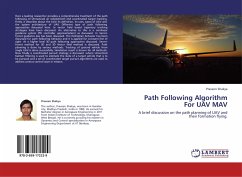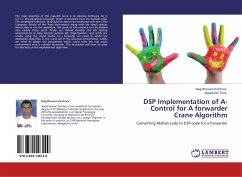
Quadrupedal Walking Algorithm for NASA's 12-TET Walker
A novel movement strategy for the Martian rover prototype
Versandkostenfrei!
Versandfertig in 6-10 Tagen
27,99 €
inkl. MwSt.

PAYBACK Punkte
14 °P sammeln!
NASA's 12-Tetrahedron Walker (or 12-TET Walker) is a Martian rover designed for traversing rough terrain, such as rocky expanses and narrow ravines. These types of terrain have proved difficult for traditional wheel-based rovers on past missions to Mars. The 12-TET Walker is shaped like a cube and consists of twelve tetrahedrons. The 12-TET Walker has 8 exterior nodes and a central node for carrying the mission payload. Twenty-six struts connect the exterior nodes and central node. The 12- TET Walker moves by extending and contracting these struts in a specific sequence. The 8 exterior nodes a...
NASA's 12-Tetrahedron Walker (or 12-TET Walker) is a Martian rover designed for traversing rough terrain, such as rocky expanses and narrow ravines. These types of terrain have proved difficult for traditional wheel-based rovers on past missions to Mars. The 12-TET Walker is shaped like a cube and consists of twelve tetrahedrons. The 12-TET Walker has 8 exterior nodes and a central node for carrying the mission payload. Twenty-six struts connect the exterior nodes and central node. The 12- TET Walker moves by extending and contracting these struts in a specific sequence. The 8 exterior nodes also have piezoelectric sensors to detect when the nodes contact the terrain. The 12-TET Walker's critical design requirement is that it has the ability to quickly navigate any type of Martian terrain. The 12-TET Walker thus needs to apply different movement strategies, such as stretching across ravines, climbing cliffs, and quadrupedal walking, depending on the terrain type. Many 12-TET Walkers could accompany unmanned and/or manned missions to Mars. Such 12-TET Walker swarms could rapidly survey massive regions of Mars, searching for clues about Martian history or essential mission resources.












